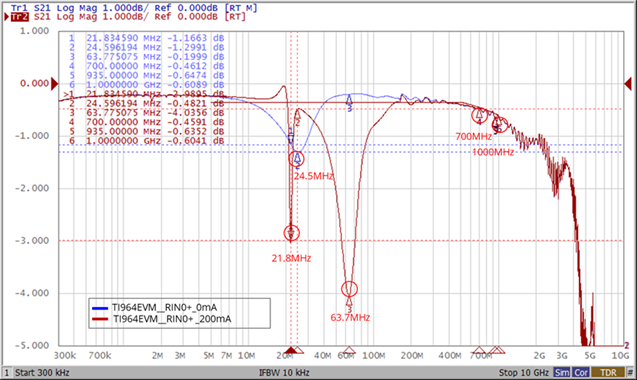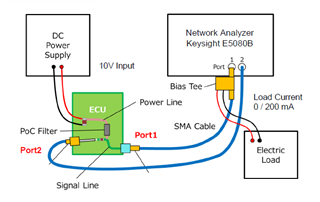Tool/software:
Hi,
We actually measured the insertion loss of the DS90UB964-Q1 EVM, and tested it in loaded and unloaded states. We found that anti-resonance occurs in the frequency band below 100MHz. The blue curve is unloaded, and the brown curve is loaded. We want to know whether the cause of the load is related to the POC combination?
In addition, will the occurrence of anti-resonance also affect the actual image transmission quality?




